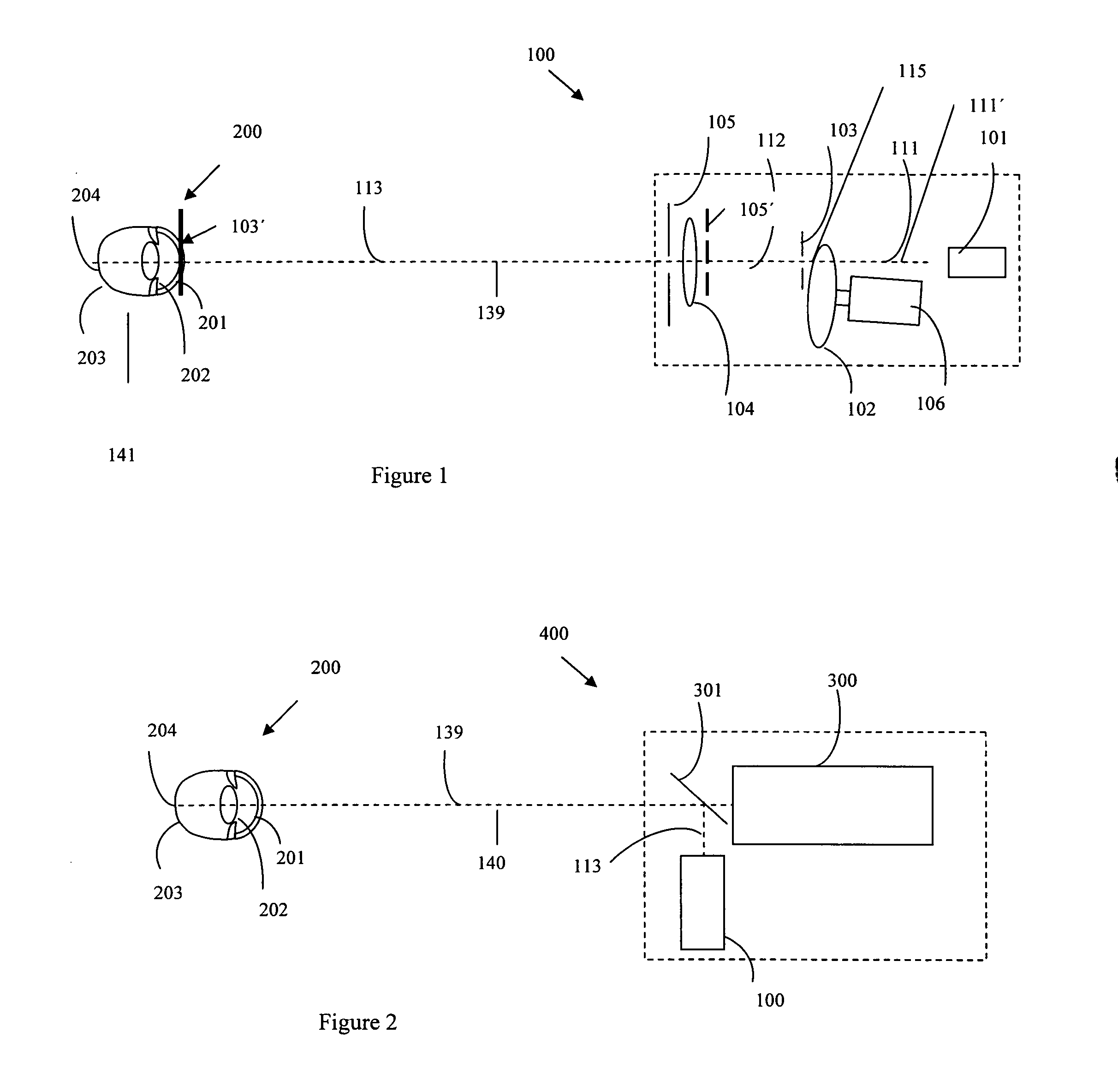Ophthalmic system and method
- Summary
- Abstract
- Description
- Claims
- Application Information
AI Technical Summary
Benefits of technology
Problems solved by technology
Method used
Image
Examples
Embodiment Construction
[0021]FIG. 1 is a schematic diagram of an exemplary ophthalmic system 100 that is particularly suited for generating a probe beam 113 used in diagnostic measurement of a subject's eye 200. The system 100 includes a light source 101 that produces at least a semi-coherent light beam 111 along a source light path 111′. A diffuser 102 is disposed in the source light path 111′ that produces a diffused light output 115 from the light beam 111. A first pinhole aperture 103 is disposed along an optical (eye) / instrument axis 139 in the path of the diffused light output 115. An optical component 104 is disposed along the optical axis 139. The optical component 104 forms a probe beam 113 of the diffused light output 115, as well as a first image 103′ of the first pinhole aperture 103 at a first predetermined image plane location 201. A second pinhole aperture 105 is disposed along the optical axis 139 between the optical component 104 and the first predetermined image plane location 201 and is...
PUM
 Login to View More
Login to View More Abstract
Description
Claims
Application Information
 Login to View More
Login to View More - R&D
- Intellectual Property
- Life Sciences
- Materials
- Tech Scout
- Unparalleled Data Quality
- Higher Quality Content
- 60% Fewer Hallucinations
Browse by: Latest US Patents, China's latest patents, Technical Efficacy Thesaurus, Application Domain, Technology Topic, Popular Technical Reports.
© 2025 PatSnap. All rights reserved.Legal|Privacy policy|Modern Slavery Act Transparency Statement|Sitemap|About US| Contact US: help@patsnap.com



